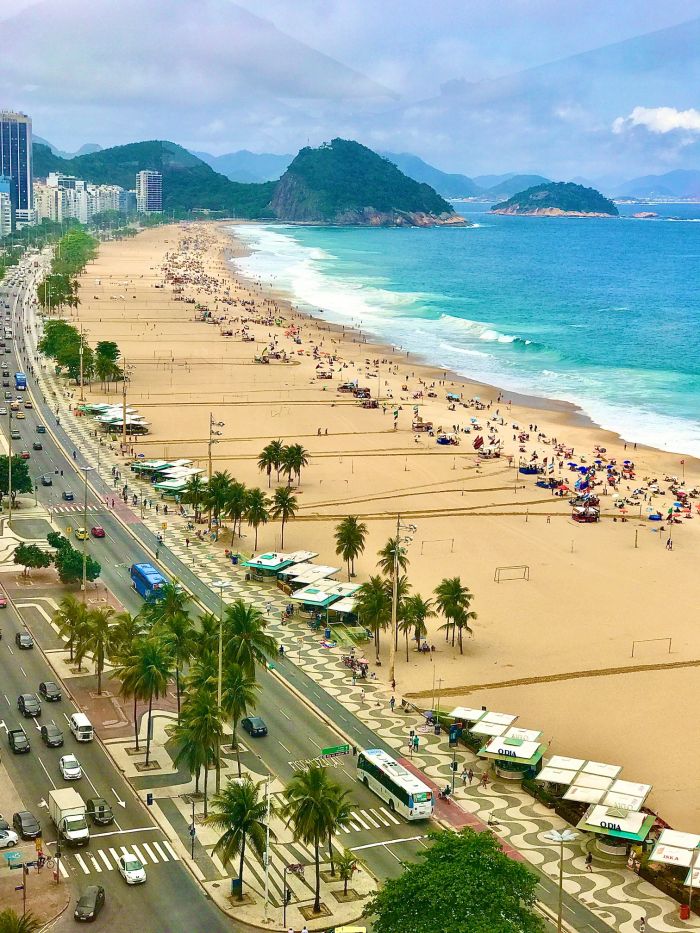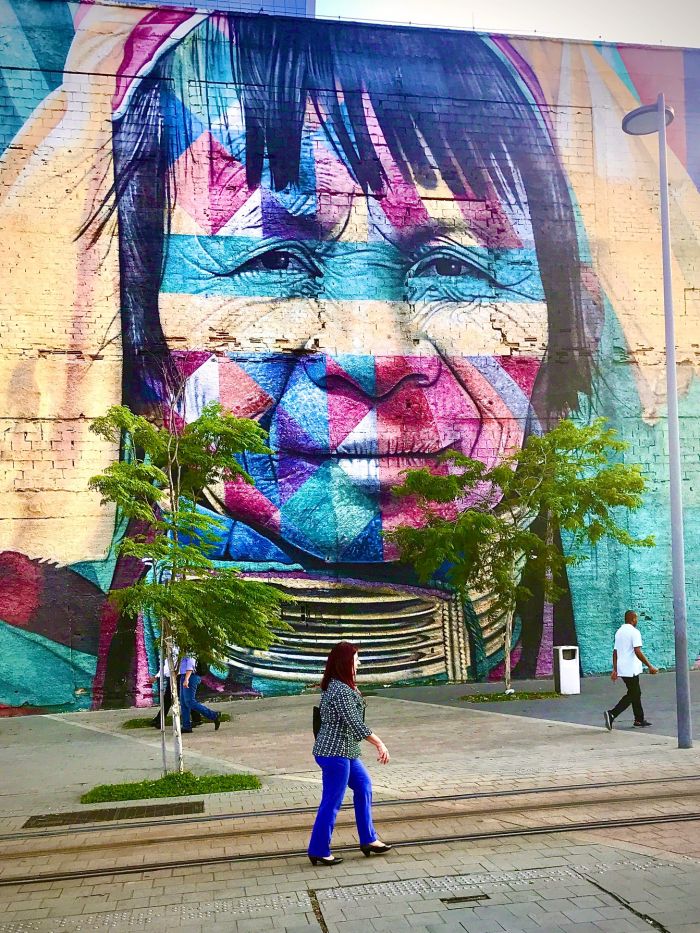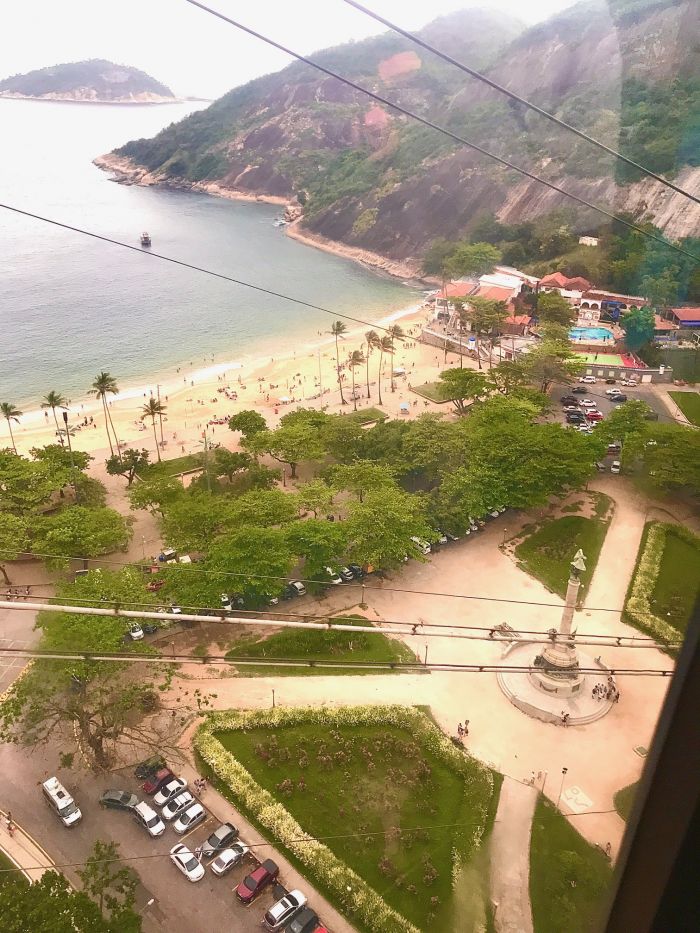Recently the Brazilian government lifted the tourist visa requirements for visitors from the United States, Canada, Austraila and Japan. Now is the time to visit Rio de Janeiro to see the beaches that inspired the Grammy winning song "Girl from Ipanema" as well as "Copacabana" and "Sugarloaf."

One of the most luxurious hotels is the Sheraton Rio de Janeiro. Built 45 years ago as the first international hotel chain in Rio, at the end of Leblon Beach. This 26 story hotel offers 539 guest rooms with balconies overlooking the beach and ocean. It’s also the only hotel in Rio that is located right on the beach offering two swimming pools, a large hot whirlpool, multiple dining options, tennis courts, a gym, a luxury spa, and a kid’s club.
The private Sheraton club lounge on the top floor offers 180-degree views with a display of breakfast dishes, snacks and happy hour with beer, and a variety of wines. Guests sit in the luxury lounge and gaze out towards Ipanema beach. This is the beach that inspired the famous bossa nova song “The Girl from Ipanema” by Tom Jobim and Vinicius de Moraes. Winning a Grammy award in the 1960s brought awareness and new visitors to Rio de Janeiro to seek out 'tall and tan' beauties.

Copacabana beach is another famous Rio destination thanks to singer and piano player Barry Manilow, and songwriters Jack Feldman and Bruce Sussman. While Manilow and Sussman were at the Copacabana Hotel in Rio de Janeiro, they discussed writing a song and calling it 'Copacabana'. Besides the Copacabana in Brazil, Manilow was a regular at the Copacabana nightclub in NYC. Sussman and Feldman wrote the lyrics and Manilow created the music.
Also known as 'Princess of the Sea,' locals and visitors walk on the famous wavy mosaic sidewalk to reach Copacabana Beach. Every year, over two million locals and tourists go to the Copacabana beach to celebrate New Year’s Eve and watch the firework display above the sea. Located in the South Zone, the five-star JW Marriott Hotel in Rio de Janeiro is located right across the street from Copacabana Beach. Guests staying at the hotel enjoy the Moonlounge Rooftop Bar and lounge, as well as sunbathe and swim at the rooftop outdoor heated swimming pool. The panoramic views are spectacular during the day and evening.
Nearby Princess Diana, Evita Peron and Nelson Mandela stayed at the Belmond Copacabana Palace. Built in 1923, the architecture was inspired by some of the luxury hotels along the French Riviera.

Rio de Janeiro’s most iconic landmark is located at the peak of Corcovado mountain in Tijuca Forest National Park. Christ the Redeemer is the best-known symbol of Brazil. Weighing 1,145 tons, the statue was built in 1931 to celebrate the independence of Portugal and is one of the New Seven Wonders of the World.
The best way to reach this welcoming statue is by cog train on a 25-minute ride through the Atlantic Forest. Views while climbing to the top include Maracana Stadium where football (soccer) legend Pele scored his 1,000th goal in 1969. Renovated for the World Cup Final in 2014, this was the stage for the opening and closing ceremonies of the 2016 Rio Olympic Games.
Another view is a huge heart-shaped lake surrounded by green mountains with bike paths and a rowing complex that was used during the 2016 Olympics.

Another must see is the Botanical Gardens created in 1808 by Dom Joao VI for the Royal family of Portugal. This park is filled with a variety of native plant species and greenery from all over the world. Visitors rest next to the serene lake topped with water lillies. There is also an orchid nursery, towering waterfall, and rows of 100 year old rare Imperial palm trees.

During the Rio 2016 Olympic Games, the Guinness World Records officially recognized the world's largest spray painted mural. Titled 'Etnias' (Ethnicities) by Brazilian street artist Eduardo Kobra and his team, all of the bigger than life faces have roots in the African slave communities of Brazil. The long promanade along abandoned warehouses near the port, has been transformed with restaurants, hotels and bars opening. This free walk is a story of how the Brazilian cultural identity developed from slavery to today.

Another iconic spot in Rio de Janeiro is Sugar Loaf at the entrance of the city’s Guanabara Bay. Jazz musician Herb Alpert recorded the song 'Sugarloaf' for his 1982 album Fandango. Locals and visitors board a Swiss-made bubble-shaped cable car to Morro da Urca (Urca Hil), and then transfer to another cable car to ride up to Sugar Loaf Mountain. The rides offer 360° views of the surrounding city, vast Atlantic Ocean, famous beaches, boat harbor and Pedra de Gavea mountain. Walking down to the cable cars, stop at the Wish Tree and walk between two tree trunks to make a wish. After spending a few days in this popular Brazilian beach city, your senses will be awakened by the sights and sounds of Rio.










